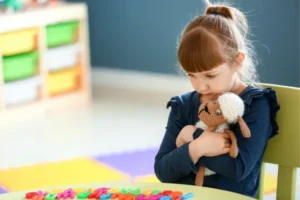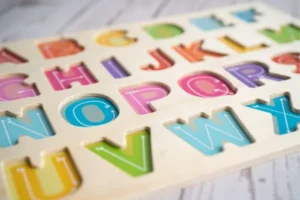Children with autism often face challenges in language development, such as delays in speech, difficulty understanding social cues, and limited communication skills. These obstacles can affect their ability to express themselves and connect with others. Educational toys offer a fun and effective way to support communication and social skills, promoting language development in an engaging manner. This article explores creative ways to use educational toys to help children with autism develop language skills while enjoying playtime.
Understanding the Role of Educational Toys
Educational toys are crucial tools for developing language and communication skills in children with autism. These toys encourage children to engage in activities that promote vocabulary building, articulation practice, and social interactions. Key features of these toys include:
- Interactivity: Toys that respond to actions with sounds or words encourage verbal and non-verbal communication.
- Sensory Engagement: Toys that stimulate multiple senses—sight, sound, and touch—help children link sensory experiences with language.
- Repetition: Repetitive play allows children to practice speech patterns, reinforcing learning and making language acquisition more natural.
These features create a supportive environment for language growth, enabling children to develop communication skills at their own pace.
Creative Ways to Use Educational Toys
- Turn Playtime into Learning Sessions
Use everyday playtime as a learning experience by incorporating structured language activities. For example, while playing with a toy kitchen, encourage your child to name the ingredients or describe the cooking process, helping them build vocabulary and sentence structure. - Role-Playing and Storytelling
Pretend play is an excellent way to practice conversational skills. Using dolls, action figures, or playsets, encourage your child to role-play different scenarios and engage in conversations. This practice helps children develop social language and back-and-forth communication. - Sensory Play for Engagement
Sensory toys such as textured balls, sound-producing objects, or interactive boards engage children’s senses and enhance language comprehension. Guide your child to describe what they see, feel, or hear, reinforcing language through sensory experiences. - Pairing Toys with Songs and Rhymes
Musical toys that sing or play rhymes encourage language development. Singing songs together or rhyming with toy characters helps reinforce vocabulary and pronunciation while making language learning enjoyable. - Creating Themed Activities
Themed play scenarios, like a grocery store or school, offer opportunities for situational language use. These activities encourage your child to practice language in different contexts and develop social communication skills.
Tips for Maximizing Toy Benefits
To maximize the benefits of educational toys, consider the following tips:
- Observe Your Child’s Preferences: Tailor activities to your child’s interests to keep them engaged. Whether they prefer interactive toys, sensory play, or role-playing, aligning the toys with their preferences enhances their learning experience.
- Incorporate Positive Reinforcement: Celebrate your child’s efforts, whether they’re using new words or engaging in conversation. Positive reinforcement boosts confidence and motivates continued participation.
- Collaborate with Therapists: Consult with speech-language pathologists (SLPs) or other professionals for additional strategies to align toy use with your child’s therapy goals, ensuring that toys support language development effectively.
Recommended Educational Toys for Autism and Language Growth
Here are a few toys that support language development and can be used creatively:
- Sensory Bins: These bins are filled with materials like rice, sand, or beads, encouraging children to describe textures and items. Sensory play promotes language comprehension while enhancing fine motor skills.
- Interactive Robots (e.g., Cozmo, Botley): Robots that respond to commands help children practice verbal communication, turn-taking, and following instructions, making language learning interactive and fun.
- Pretend Play Sets (e.g., Play Kitchens, Doctor Kits): Role-playing toys like play kitchens or doctor kits encourage storytelling and conversation, allowing children to practice language in context.
- VTech Touch and Learn Activity Desk: This activity desk promotes vocabulary building through interactive games, reinforcing language skills in a multisensory way.
- LeapFrog My Pal Violet: This customizable plush toy encourages verbal communication by singing songs and engaging in interactive conversations.
Encouraging Parent-Child Interaction
Active involvement from parents in toy-based activities is essential for promoting language development. By joining in on the play, parents can model language, take turns, and reinforce learning. This strengthens the parent-child bond and creates a supportive environment for language growth.
Tips for Meaningful Parent-Child Interaction:
- Join in the Fun: Participate in play by modeling language and showing enthusiasm. This provides a live example of communication for your child.
- Use Simple and Clear Language: Speak at a level your child can understand and use repetition to reinforce learning.
- Be Patient and Flexible: Every child progresses at their own pace, so be flexible with your approach and offer gentle encouragement.
- Celebrate Small Achievements: Acknowledge even the smallest progress, which boosts your child’s confidence and motivation.
- Create a Play Routine: Consistent play routines help children understand that playtime is a special time for bonding and learning.
Success Stories and Examples
Here are a few examples of how creative toy use has helped children on the autism spectrum improve their language skills:
- Emma’s Story: Emma, a 4-year-old with autism, began using an interactive robot, Cozmo, which helped her improve her vocabulary and engage in conversations by mimicking the robot’s phrases.
- Noah’s Story: Noah, a 5-year-old, improved his social language and vocabulary through pretend play with a doctor kit. Role-playing scenarios helped him practice turn-taking and use language in social contexts.
- Mia’s Story: Mia, a 3-year-old with sensory challenges, improved her vocabulary by describing textures in a sensory bin filled with rice and beads, reinforcing language through sensory play.
- Liam’s Story: Liam, a 6-year-old, practiced articulation and pronunciation through musical play with LeapFrog’s “My Pal Violet,” which helped him improve his speech clarity.
Conclusion
Educational toys are powerful tools for promoting language development in children with autism. By incorporating sensory, interactive, and imaginative play, these toys help children build essential communication skills. Parents and caregivers play a critical role in fostering language growth by using creative approaches and celebrating progress. With patience and consistency, children can make significant strides in their communication abilities, turning playtime into a valuable opportunity for growth. Keep exploring new ways to engage your child and enjoy the rewarding experience of watching their language skills blossom.



